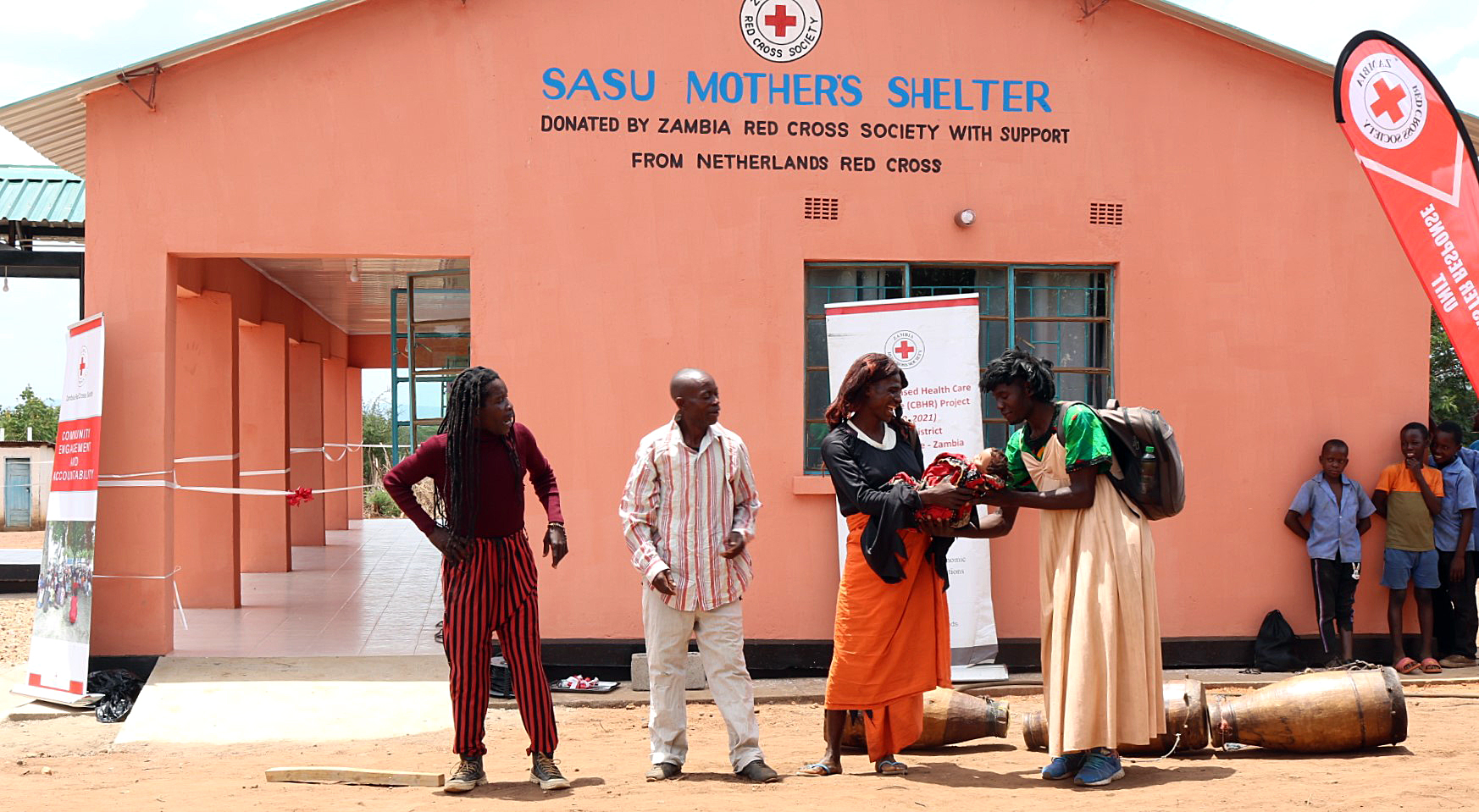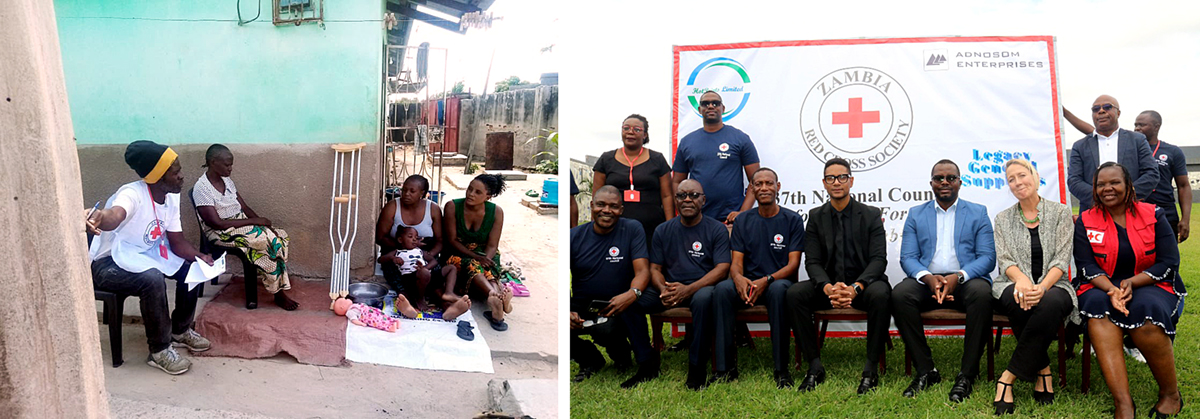Reading time 5 minutes
THE ZAMBIAN RED CROSS IS THRIVING
The power of collaboration
The Zambian and Dutch Red Cross have been partner countries for ten years. From an organization in crisis, the Zambian location grew into a stable association. The Dutch Red Cross invested in the growth and supported the regular relief efforts. Marianne Deelder, representative in Zambia on behalf of the Dutch Red Cross, talks about the positive impact of the long-term commitment.

Zambia is a rural country in southern Africa with a population of about 19 million.
"This is a very nice and beautiful country with many challenges," Marianne Deelder begins her story. About 54% of the population lives below the poverty line and the country also has to deal with many floods, droughts and epidemics. There has been a serious cholera outbreak since January 2024. Childhood diseases, such as measles and polio, are also common. "Climate change is causing major problems in Zambia," Marianne continues. "In areas where there are normally hardly any floods, you now see them every year. Agricultural fields depend on rainfall. If there is not enough rain in the rainy season, there will be less harvest. Responding to climate change will be the challenge in Zambia in the coming period."
Entering into a marriage
The Dutch and Zambian Red Cross have a long-term partnership. "It's like entering into some kind of marriage. Around 2014, the Zambian association went through a financial crisis that resulted in a lot of debts and lawsuits. This had a very negative impact on the reputation of the organization. When the partnership started, we said: we will stay with you, in good times and bad. We want to help you rebuild the organization."
"First, we supported the national sister association with the basic elements that a well-run organization needs. Such as financial sustainability, the organizational structure and a good reputation. In addition, you have to take risks during a collaboration. There are needs in the country, so we need to invest. We always look together at the best way to do this."
Own income
For example, investments have been made in a business model that allows the Zambian Red Cross to increase its own income. "In Zambia, every company is required by law to have a number of First Responders and a proper First Aid Kit. The national organization has responded to this with the support of the Dutch Red Cross. By setting up good First Aid and providing paid training, the Zambian Red Cross has built up a clientele at banks, factories, supermarkets and other companies. The First Aid trainings are a source of basic income. After eight years of external investment, the organization is now doing this completely independently. The proceeds of the training will be used by the Zambian Red Cross to finance the core activities."
Relief activities
One of these core activities is water and sanitation services. That is one of the great needs in the country. "During a cholera outbreak, water plays a major role. This must be clean in order to limit the spread of the bacterium that causes the disease and thus reduce the number of infections. The local Red Cross also helps with the water supply in many schools and clinics. Surrounding villages benefit from this. Water wells are increasingly powered by solar panels, an approach that the Zambian Red Cross wants to expand further in the coming years."

Prevention training with volunteers on Cholera | Follow-up visit on cholera response operations Chawama Subdistrict Lusaka
Another branch is disaster prevention and preparedness. To this end, the national department works together with the Ministry of Health, the Ministry of Disaster Management and the Dutch Red Cross. "We mainly focus on capacity building and training. The trainings are for volunteers who provide First Aid for disasters at the village, district and provincial level. Vehicles and relief supplies are also ready to be deployed in the event of disasters. Not all areas are easily accessible, especially during disasters. That's why it's important to have relief supplies available in different parts of the country. When all the relief materials have to come from the capital in the event of a flood, it takes about three days. While a vehicle with blankets, jerry cans, tents, etc. can be at the disaster site within one day."

Home visits to raise awareness in the district of Monze | National Council of the Zambian Red Cross
Independent
The Zambian Red Cross flourished and is now a stable association. "As a partner country, we support a sister association so that they can strengthen their own organisation. Ultimately, external technical support is less and less necessary. That's one of the goals of the partnership."
At the end of 2023, the Zambian and Dutch Red Cross decided that they want to work together for another five years. "The new partnership requires a different kind of support. We now want to focus more on the local chapters and fundraising."
"Over the past ten years, we have learned to work openly and directly with each other. There is trust. Zambia is a good example of the positive impact that a long-term partnership can bring compared to unpredictable ad hoc support aimed at providing aid alone. The Zambian Red Cross has really flourished."

Youth group Zambian Red Cross with visit from Head of the International Netherlands Red Cross | Construction of flood proof shelter